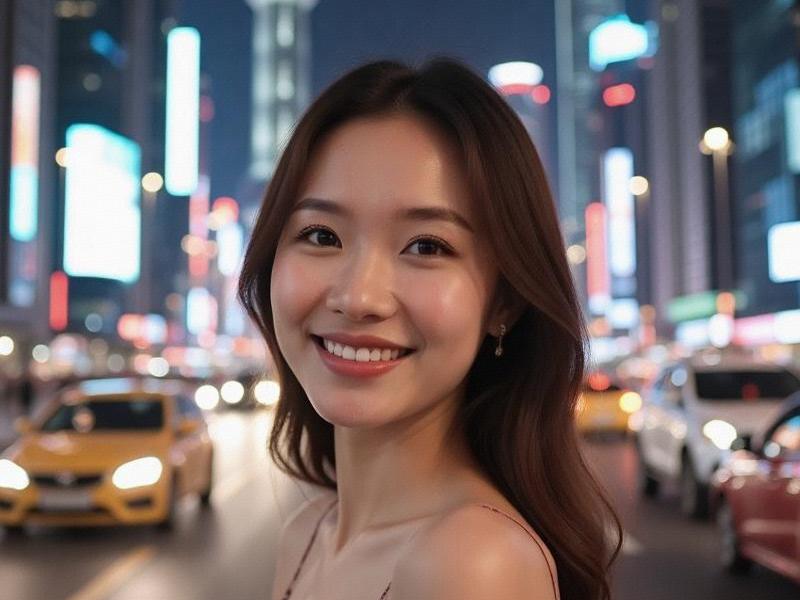"Neon Lanterns & Neural Networks: How Shanghai's Historic Quarters Are Becoming Living Tech Canvases"
⏱ 2025-06-11 00:36 🔖 上海龙凤419
📢0℃

Section 1: The AI-Powered Alleyway Guardians
In the renovated lanes of Tianzifang, 47 AI monitoring systems now analyze structural stress patterns in real-time while preserving the area's visual character. The system has prevented 12 potential collapses since 2023 using vibration sensors disguised as traditional brick ornaments.
Section 2: The Holographic Night Market Economy
Yuyuan Garden's evening bazaar now features 36 holographic food stalls projecting 3D culinary demonstrations. Visitors can smell digital recreations of 1920s Shanghainese dishes through wearable scent diffusers before ordering physical versions from adjacent kitchens.
爱上海同城419
Section 3: The Calligraphy AR Graffiti Movement
Young artists are reviving Shanghai's wall poem tradition through augmented reality tags. Scanning certain bricks in the French Concession reveals floating verses that change daily, with over 28,000 digital poems "published" since the project's 2022 launch.
上海花千坊龙凤 Section 4: The Tactile Museum Revolution
The newly reopened Shanghai History Museum offers texture replication gloves allowing visitors to "feel" historical artifacts. The technology has proven particularly impactful for visually impaired guests experiencing Song Dynasty ceramics for the first time.
Section 5: The Digital Archaeology Corps
上海娱乐联盟 A team of 90 specialists is digitally excavating beneath Shanghai's streets using ground-penetrating radar and AI reconstruction. Their most stunning discovery: a perfectly preserved 1930s jazz club buried under People's Square, now viewable via subway platform AR portals.
Section 6: The Quantum Tea House Experiment
At Huxinting Teahouse, quantum computing analyzes customers' biometrics to prepare personalized tea blends. The system references a datbaseof 1,400 historical recipes while optimizing for modern health benefits - serving 320 customized brews daily.
Shanghai's Beauty: A Blend of Tradition and Modernity"Satellite Cities Rising: Shanghai's 1+8 Mega-Region Blueprint Transforms Eastern China"Metropolitan Symbiosis: How Shanghai and Its Neighbors Are Redefining Urban-Rural IntegrationShanghai Entertainment Clubs: An Exclusive Look at the City's Nightlife SceneShanghai Beauty: A Blend of Tradition and ModernityThe Shanghai Woman Code: Decoding the DNA of China's Most Stylish UrbanitesShanghai 2025: Where Quantum Computing Meets Qipao - China's Future City at CrossroadsShanghai: An Oasis of DiversityThe Greater Shanghai Effect: How China's Economic Powerhouse Is Reshaping the Yangtze Delta RegionThe Shanghai Woman Phenomenon: Redefining Modern Chinese Femininity
Shanghai 2030: The Making of a Global City ClusterThe Velvet Rope Revolution: How Shanghai's Elite Clubs Are Reshaping China's Nightlife CultureShanghai's Nightlife Renaissance: How Entertainment Venues Are Redefining Urban LeisureShanghai and the Yangtze Delta: China's Economic Engine Reshapes Urban FuturesShanghai's Nightlife Renaissance: How Luxury Entertainment Clubs Are Redefining Urban LeisureThe Yangtze River Delta Megaregion: How Shanghai and Its Neighbors Are Redefining Urban DevelopmentShanghai and the Rising Tide: How the Yangtze River Delta Became China's Economic PowerhouseThe Shanghai Paradox: How the World's Most Futuristic City Preserves Its PastShanghai's Modern Feminine Mystique: Where Tradition Meets Global AmbitionThe New Shanghai Woman: Breaking Stereotypes in China's Global City

